March 30, 2025
- hfalk3
- Mar 30
- 5 min read
Updated: Apr 1
Hôtel Menzeh Zalaga, Fés, Morocco
Good morning. Our tour begins this morning at 08:30. We are going to tour the old town (Medina) of Fés. We got breakfast in the hotel. Again nothing special, except the only eggs they had were hard boiled. Perhaps it had something to do the Ramadan? We were down stairs and on the motor coach before 08:30 ready to go.
On the way to the Medina we stop at the Royal Palace here in Fés, and in the old Jewish quarter. The historic Jewish quarter isn known as the Mellah and is believed to dated from the mid-15 century when the Jews and Muslims were forced to leave Spain. The royal family accepted the Jews because they were persecuted by the Spanish just like their Muslim brothers. The were allowed to build the Mellah next to the Royal Place as a sign of support.
The plaza in front of the palace, the palace gates, old people standing by the gate.
The entrance to the is really quite impressive. There were just a few tourists and Aziz said we were lunch because we could get photos of the gates without crowds of tourists. We then walked though part of the Mellah looking at the architecture. The shops were all closed; one because it was early and two because it is still Ramadan.
The Mellah
We stopped at the Semmarin Medina Gate. The ‘Bab” or gate, is also known as the gate of the farriers as this would be where their shops would have been located. A farrier is a specialist in equine hoof care, including the trimming and balancing of horses' hooves and the placing of shoes on their hooves, if necessary.
The Semmarin Gate
As with every tour and with every opportunity to learn about the skills and craftsmanship in a local environment, you get the opportunity to stop some where to take advantage of the opportunity. However, this almost always comes with the opportunity to buy something. Today we are gong to learn about pottery and Moroccan ceramics here in Fez. Our stop is at Art de Poterie ACH a company owned and operated by a man named Driss Fenassi. Driss has been producing Moroccan handmade pottery for many years using an amalgam of ancestral techniques and knowledge with a modern touch.
Thanks to the environment in which he has born and raised in, Driss spend most of his childhood twisting, blending, squeezing, and slapping clay. This established a very strong connection between him and the love of ceramics, and after many years and a tremendous amount of trial and error, he has accumulated a lot of experience and skills and ultimately became one of the pioneers in the industry.
Pottery and ceramics in Fés trace their influences and origins to as early as the Phoenicians. However, the ceramic tradition that we identify as most typically from Fés today has clear roots in the period around the late 15th century during the Spanish Inquisition. This was a period when Arabs and Jews were forced out of Andalucía. Many of the artisans and craftsman who had worked on projects like the Alhambra in Granada and learned the craft of glazed ceramics in Cordoba, gravitated to Fés, a bustling, wealthy city.
The combination of the skill and techniques of Andalusian Arab artisans along with a wealthy merchant class with disposable income, all led to the establishment of the ceramic tradition of Fés pottery that remains there to this day. Fassi ceramics are shaped as much by the local geography as by Fés’ rich history.
The local clay found around Fés is fine in texture and predominantly grey (as opposed to the terracotta tones found further south). The color and texture of the clay has directly impacted the design. As it dries, the natural grey tones of the clay lighten in color making it the perfect blank canvas for the white glaze and cobalt decoration. The natural mineral content of the clay surrounding the city, along with a relatively low amount of impurities, means it is suitable for finer work and is more durable once fired. The high firing temperature also means it can usually withstand the more modern rigors of microwaves and dishwashers!
Of course it was necessary to buy something – really? Fortunately, most things are both too heavy and too bulky to take. They would also cost a fortune to send back to the US. And since we don’t have a house, where would be even put it. However, Mary found some little cups for holding condiments and a coffee mug for me. Yes, we will be buying another suitcase.
View of the Medina from the ceramics workshop
We boarded back on the motor coach and headed to the Medina. We then spent the next couple hours walking through the Medina. It is a colorful palace, much like the market in Istanbul but not as neat and organized. We saw olives of every type. Merchants selling colorful wools and garments. We went by several mosques which at one point were the places of learning. We in went into a building that once housed a madras.
Olives and wool dyeing
We went to the area of the city with the leather merchants. We saw the hides being cleaned washed and dyed. We looked a a lot of the leather products. Although I think the leather in Firenze is of better quality.
Leather production the good old fashion way
We then boarded the motor coach and drove to the famous Blue Gate. It is one of the principal gates to the Medina. Blue tile on one side and green tile on the other. Quite beautiful. They then took us to a Riad where we had our lunch.
The Blue Gate
We had a really nice lunch inside the Riad. The place was quite beautiful. When you walk down the narrow alleys past door and after door, and shop after shop you don’t know what is behind the door or shop. This Riad may have been an upper class Riad but like in Italy you can walk by a nondescript building which houses the most beautiful interior.
We boarded the motor coach after lunch and headed back to the hotel. We rested for a while and then went for a walk. It is Ramadan so everything was closed. We walked down to the mall, but nearly everything was closed there. The cannons went off signaling the end of the fast for the day about 18:45. We saw a few people going to Burger King to break the fast. There are a number of other places to eat in the food court but none of them were open yet, but the staff were all sitting around eating their first meal since sunrise.
We stopped at Burger King just because it was what was open. Got a chicken sandwich, fried and a drink. Afterwards we headed back to the hotel getting back about 19:30. We are ready for bed but know we need to stay up until at least 21:00.
We have a long travel day tomorrow. 410 km. Fés > Ifrane > Erfoud. We will travel across the Middle Atlas range. We’ll see what is going to happen. We did manage to get 10,000+ steps in today. We did ok.
So, Buonanotte e ciao, Enrico e Maria

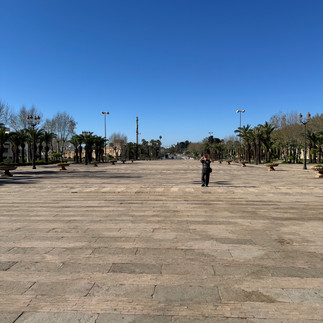



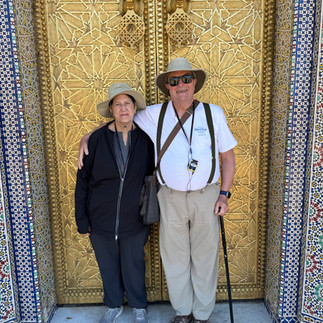

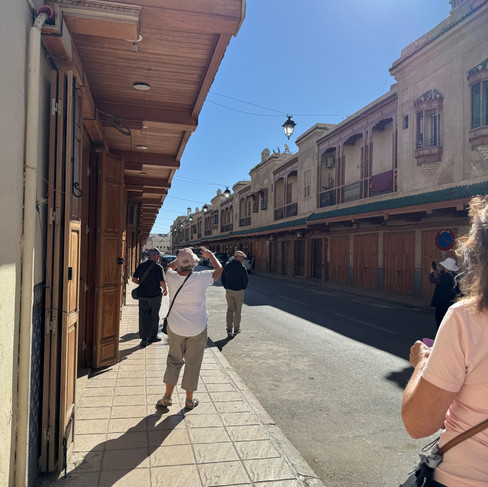






















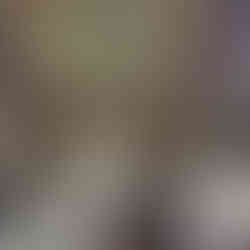








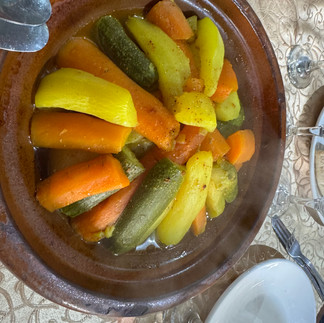


Comments